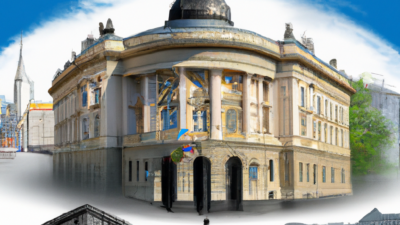### Why the Monetary Policy Committee Was Formed: An In-Depth Exploration
In the intricate web of a nation's economic framework, the stability and growth of the economy are paramount. Central to achieving this balance is the management of interest rates and inflation, a task that rests on the shoulders of monetary policy. But who decides the course of this vital policy? Enter the Monetary Policy Committee (MPC), a specialized body established to navigate the complexities of economic governance.
This article delves into the origins and necessity of the MPC, charting its evolution and examining its critical role in modern economic oversight. From promoting sustainable growth to ensuring price stability, the formation of the MPC represents a strategic move towards more structured and transparent economic decision-making. Understanding why the MPC was formed not only sheds light on its significance but also enhances our appreciation of the meticulous planning that underpins a nation's economic health. Join us as we explore the rationale behind the creation of the MPC and its enduring impact on the financial stability of economies worldwide.
Sure! Here is a suggested content outline for an article covering the topic "Why Monetary Policy Committee Formed":
The establishment of a Monetary Policy Committee (MPC) arises from the need to enhance the credibility, transparency, and effectiveness of a country's monetary policy. Central banks are typically tasked with maintaining price stability, controlling inflation, and fostering economic growth. To achieve these objectives, the formulation of monetary policy requires careful consideration of various economic indicators and conditions.
One of the primary reasons for forming an MPC is to decentralize the decision-making process. Instead of relying on a single individual or a small group within the central bank, an MPC brings together a diverse panel of experts with different perspectives and expertise. This diversity helps in making more balanced and well-considered decisions regarding interest rates, money supply, and other monetary tools.
Transparency is another critical factor. The MPC often operates under a framework that requires it to publish minutes of its meetings, voting records, and the rationale behind its decisions. This level of openness helps market participants, businesses, and the general public understand the central bank's policy direction, thereby reducing uncertainty and increasing confidence in the economic system.
Moreover, the formation of an MPC can enhance the accountability of the central bank. Members of the committee are usually appointed for fixed terms and are often subject to legislative or executive oversight. This structure ensures that monetary policy decisions are made in the best interest of the economy, rather than being influenced by short-term political considerations.
In addition, an MPC can improve the effectiveness of monetary policy by incorporating a wide range of economic data and models into its decision-making process. This comprehensive approach allows for more accurate assessments of the current economic environment and better predictions of future trends.
In essence, the formation of a Monetary Policy Committee is designed to foster a more robust, transparent, and effective monetary policy framework that can better serve the economic goals of stability and growth.













